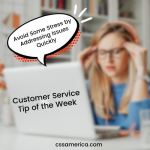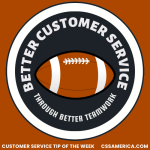It’s great; it stinks. That sums it up.
For someone who likes to talk with others, who enjoys answering questions, educating others, and solving problems, it’s a very rewarding job. For someone who likes a different challenge every minute, it can fulfill that desire.
But for many call center representatives, there is the difficulty in trying to meet the numbers – have a low handle time, get the post-call work done quickly, take short restroom breaks – it can be frustrating.
Like with any business, frustration often results from competing priorities. You are in a customer service role to serve. You are there to help others. You are there to help guide, to respond, to defuse, to educate. But at the same time, you are there to get the work done quickly. To address the need as fast as possible without involving anyone else if at all possible. You are there to interact with as many customers as you can in your limited time during the day.
According to a Chicago Sun-Times for the article on what life can be like as a call center customer service representative, “The reps at [her] call center were expected to field calls, take down information, check files, fill out forms, flag down faxes, write notes about each conversation and more, at times viewing four computer screens at once. Three seconds after they hung up, a new call would come in. A big call board would flash with multi-colored lights indicating whether new calls were being picked up in less than 30 seconds, and if they weren’t, there’d be trouble.”
For any organization wanting to succeed in employee retention, customer retention, operational excellence, and long-term growth, there needs to be a balance. There need to be measurements of and incentives for satisfaction, loyalty, retention, repeat purchases, and new business generated from current customers just like there are measurements and incentives relating to productivity, error rates, and throughput time.
Find a balance of what you measure and reward for the sake of your people, your customers, and your business success.
Read our New Book – “Ask Yourself…Am I GREAT at Customer Service?” http://www.amigreatat.com/
Interested in improving your company’s customer service? See more at our new website! http://www.cssamerica.com/





















